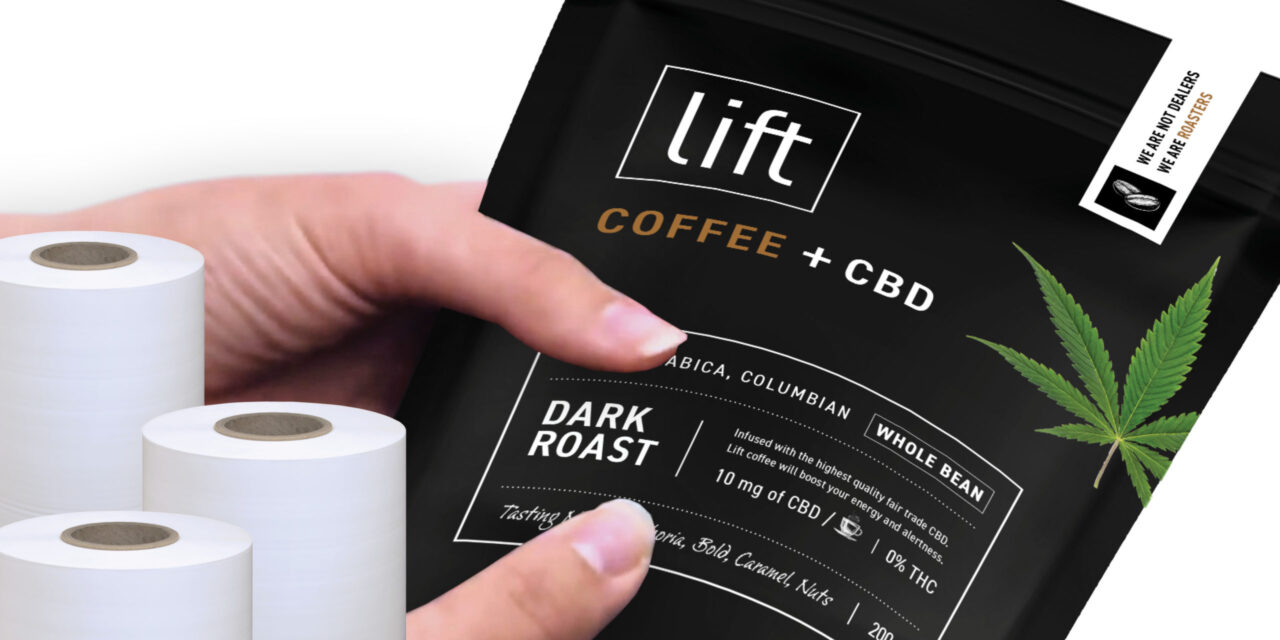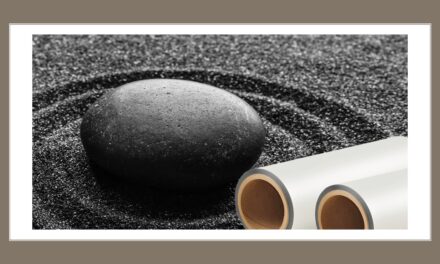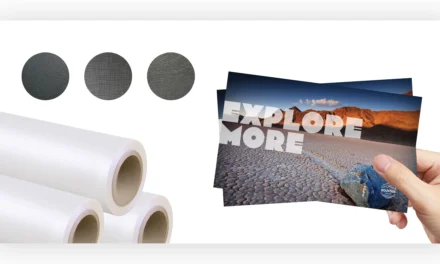What Is Karess Laminate?
Karess.
Before you ever get your fingers on a sample of this Nobelus® soft-touch laminate, the product’s name evokes an idea of luxury and sentimentality. A caress is gentle, soft, and reserved for things regarded as valuable and precious. These traits are precisely how manufacturers want shoppers to view high-end brands from the moment they take a package off the shelf. This emotional response to a tactile experience can influence customer behavior and increase the odds that they become attached to the product and eventually purchase it. For all these reasons, Karess is considered a premium laminate and has quickly become one of Nobelus’ best-selling options.
Karess stands out from other soft-touch laminates because its topcoat exceeds the richness and softness of available alternatives. Time and again, clients have named Nobelus’ Karess line as their first choice in soft touch because of the luxurious feel and quality performance of our product. We also offer a variety of materials, thicknesses, and compatibilities for different presses, inks, and embellishments. Whether you’re making labels or folding cartons, using a digital or flexographic press, or adding overprint or spot UV, we offer a Karess option that can meet your needs. We’ll take a comprehensive look at each type of Karess and the factors that make it distinct to ensure you know which type is best for your application.
Why Are There So Many Kinds of Karess?
As packaging needs grow more diverse with emerging technologies and markets, Nobelus has invested significant time and funding into research and development to ensure we offer laminates and unsupported films to meet any challenge. Several factors can affect whether a specific type of Karess is compatible with a given project. Understanding the why behind the what is tantamount to finding the specific Karess you’ll need to make your products stand out as a premium option.
At their core, soft-touch laminates are defined by their texture rather than their material composition. Whether the base material is a pliable polypropylene (BOPP), a rigid polyester (PET), or a lay-flat nylon, every Karess product provides a velvety smooth tactile experience. Each material has its own strengths and weaknesses that should be taken into account before making a decision.
- BOPP – Sometimes shortened to OPP, biaxially oriented polypropylene has been stretched in two directions so that it’s easier to manipulate and more receptive to additional coatings. It’s ideal for single-sided applications where it will be processed through gluers and die cutters. Products that will be folded, such as cartons, are typically laminated with OPP because of its malleability and ease of handling. This material is highly receptive to post-print embellishments and can be used on equipment with a bursting separator, but it cannot be used for encapsulation.
- PET – This material is available in the widest range of thicknesses, spanning from 0.8 mil to 10 mil. PET is rigid and provides more strength and durability, making it a top choice for products that will be used frequently, such as identification cards and point of sale pieces. PET thicknesses of 3 mil or higher should be used only for applications that will be laminated on both sides for best results.
- Nylon – Mostly used for single-sided laminated book covers, nylon is hygroscopic, which means it allows water to pass through, granting it a “lay flat” functionality.
EQUIPMENT & EMBELLISHMENTS
The processes used to print, laminate, and apply additional effects to a piece are just as important to consider as the laminate’s composition.
What kind of press will be used?
For sheet-fed applications, a conventional offset or flexographic press can typically accept the standard EVA thermal adhesive included on our laminates. For presses that run toner-based inks with fuser oils, our DigiBOND™ adhesive will provide the highest bond strength. Most presses used for label production lack a thermal nip roller and must use wet adhesives in conjunction with an unsupported film. However, technologies change quickly, and conditions can vary wildly between different operations. When in doubt, the best course of action is to contact one of our industry experts to verify which laminate your press is most compatible with
What post-lamination embellishments will be applied?
Each type of Karess has varying compatibility with post-lamination value-add effects. Those with an OPP base can be die cut, stamped, and embossed along with receiving spot UV. PET versions accept stamping, spot UV, and die cutting, but they cannot be embossed. Nylon receives die cutting and spot UV only. A few options are even classified as printable laminates, which means you can layer ink as needed for high-contrast colors and use variable-data foiling (Sleeking®) for truly unique designs
APPLICATION
The functional results of print are endless, and it would take more than a single post to cover every conceivable permutation of product and laminate. We’ll take a cursory glance at a few of the applications we see using Karess most often.
- Board Games
- Business Cards
- Collectable Cards
- Consumer Packaged Goods
- Folding Cartons
- Loyalty and Gift Cards
- Menus
- Pocket Folders
- Point of Sale
- Postcards and Direct Mail
- Prime Labels
- Rigid Boxes
- Sachets
- Signage
- Soft and Hardbound Book Covers
- Stand-Up Pouches
- Stick Packs
- Three-Sided Sealed Bags
- Trading Cards
Each example listed can employ a different combination of post-lamination processes and benefits from a unique set of qualities in the type of Karess used. If you have specific concerns or unaddressed variables, our client care team is always interested in providing education and guidance to ensure your project comes out perfectly.
COST
Budgets are tight in the world of print, so it’s important to ensure that the Karess laminate used for any given project falls within an acceptable price range for each operation. While some higher-end versions of Karess may work perfectly with a specific project, it may be in the printer’s best interest to find the laminate that meets all the metrics at the lowest price point. Typically, the least expensive option will be an unsupported film (although this type is compatible only with wet lamination systems because it lacks an adhesive layer), while the priciest will be thicker PETs. Knowing exactly what you hope to achieve with a printed piece can narrow down what features are necessary and save money in the long run.
How to Choose a Karess Laminate
Now that we’ve gotten an overview of why picking the right type of Karess is important, we can look through Nobelus’ catalog and outline the features of each Karess option. We offer several unique variations of our soft-touch laminate, but some categories include multiple thicknesses.
A quick disclaimer: The information presented below is based on testing and trends reported by Nobelus representatives and solutions experts. We always recommend testing laminates in a trial run first.
KARESS LAMINATE
In many ways the most basic and essential option, Karess Laminate can be purchased in 1.2 mil or 1.5 mil thicknesses, depending on the needs of a given project. Because it is made of OPP, this laminate is ideal for applications that will eventually be folded or bent and can support both single- and double-sided lamination. Its back side is coated in a thermally activated EVA adhesive, which makes it compatible with general commercial presses using offset, flexographic, and HP® Indigo technologies. However, it typically cannot be used with digital presses using UV inkjet or toner-based inks with fuser oil because the adhesive tends to form a weak bond with the ink. While this type of Karess can accept most post-lamination effects, it cannot receive overprinting.
Suggested applications: Board Games, Business Cards, Collectible Cards, Consumer Packaged Goods, Folding Cartons, Pocket Folders, Postcards & Direct Mail, Rigid Boxes, Soft and Hardbound Book Covers
KARESS PET
Karess PET is more substantial than OPP offerings, coming in a thickness of 3.0 mil. While it is durable enough to be used for more hands-on applications, the rigidity of this laminate makes it suitable for double-sided applications only. Compatible with flexographic, offset, and HP® Indigo presses, this laminate employs a thermal EVA adhesive that cannot usually bond properly with digital prints produced via UV inkjet or toner-based technologies. Karess PET is not printable, but it accepts many other forms of embellishment, including spot UV and die cutting.
Suggested applications: Brochures, Business Cards, Identification Cards, Loyalty and Gift Cards, Menus, Postcards and Direct Mail, Signage, Trading Cards
KARESS PRINTABLE LAMINATE
Measuring 1.4 mil thick, Karess Printable Laminate is flexible and perfect for folding purposes. While it preserves the tonality of printed designs and gives them an ultra-matte finish, the main appeal of this laminate is its compatibility with overprinting. During production, the OPP laminate receives a specially formulated topcoat that enables it to accept ink where standard laminates cannot, making it ideal for applications that use variable-data foiling. This functionality enables printers to accommodate creative design choices and complex layers for their premium products. Typically, the base design is printed before the laminate is applied. After lamination, the piece can pass through the press once more to receive a top layer of digital ink, which sticks to Sleeking foil and creates detailed, intricate designs. It also accepts spot UV and die cutting. Because it uses our standard thermal EVA adhesive, this laminate does not usually adhere to toner-based inks common in digital presses.
Suggested applications: Board Games, Business Cards, Collectible Cards, Consumer Packaged Goods, Folding Cartons, Pocket Folders, Postcards & Direct Mail, Rigid Boxes, Soft and Hardbound Book Covers
KARESS PRINTABLE LAMINATE WITH DIGIBOND
Much like the previous product, Karess Printable Laminate With DigiBOND can accommodate variable-data foiling and is compatible with spot UV and die cutting. Its DigiBOND adhesive is specifically designed to bond with UV inkjet and toner-based inks, which means it is the best option for printers with digital presses who want to employ customized foiling for their projects. A printed design would first be applied to the substrate before the printable laminate is added. Then the laminated paper would return to the press to receive a top layer of digital ink before the foil is applied. This laminate is highly malleable and enables printers to create personalized items, including invitations, business cards, and folding cartons.
Suggested applications: Board Games, Business Cards, Collectible Cards, Consumer Packaged Goods, Folding Cartons, Pocket Folders, Postcards & Direct Mail, Rigid Boxes, Soft and Hardbound Book Covers
KARESS NYLON
Karess Nylon Laminate measures 1.3 mil thick and is one of the more specialized versions of Karess due to its nylon construction. It is by far the best option for single-sided laminated book covers because it combines the traditional soft-touch, ultra-matte appeal of Karess with lay-flat functionality. This feature preserves a book cover’s appearance through transport and storage and ensures it continues close all the way even after it’s been opened time and again, making Karess Nylon the perfect match for best-sellers and classics alike.
Suggested applications: Single-Sided Laminated Soft Book Covers
KARESS FILM
Unsupported films are laminates that lack an adhesive layer, which makes them less expensive and compatible strictly with wet lamination systems where a wet adhesive is purchased separately. Designed specifically for roll-to-roll presses creating prime labels and flexible packaging, Karess Film is great for printers who want to position with luxury brands and offer a rare tactile experience in the label market. Because it’s more scuff resistant than other coatings used in flex pack and label markets, Karess Film works wonderfully for applications that see a lot of hands-on use, and it accepts die cutting, overprint varnish (OPV), and other post-lamination processes.
Suggested applications: Prime Labels, Sachets, Stand-Up Pouches, Stick Packs, Three-Sided Sealed Bags
Ready for a Sample?
Karess is the type of product you have to see (and feel) to believe. That’s why we encourage anyone who’s interested in partnering with us to get some samples and see firsthand what makes Karess so special. If you’re still unsure which type of Karess is best for your needs, our representatives and solutions managers are eager to help and ensure you can make the decision that’s best for your operation. We’d love to chat and discover how Nobelus can help you succeed.



